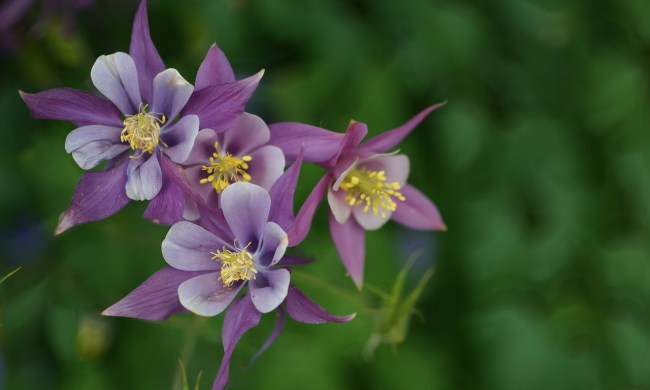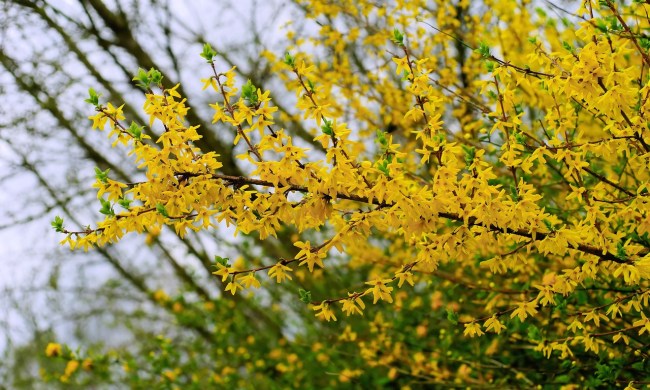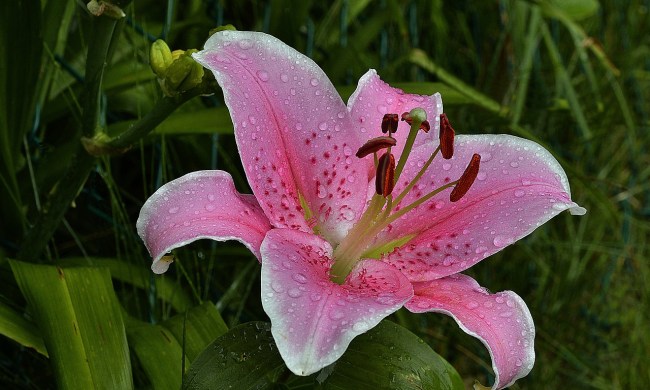Spring and summer plants are some of the most exciting and most beautiful you can plant in your garden. If you don’t plan accordingly, though, you could end up with a spot of time where nothing is in bloom, and your spring plants are spent. If you fall in that category, or are just looking for some new transitional plants for spring to summer, we’ve got you covered! Adding any (or all!) of these to your garden will help it stay beautiful all season long.
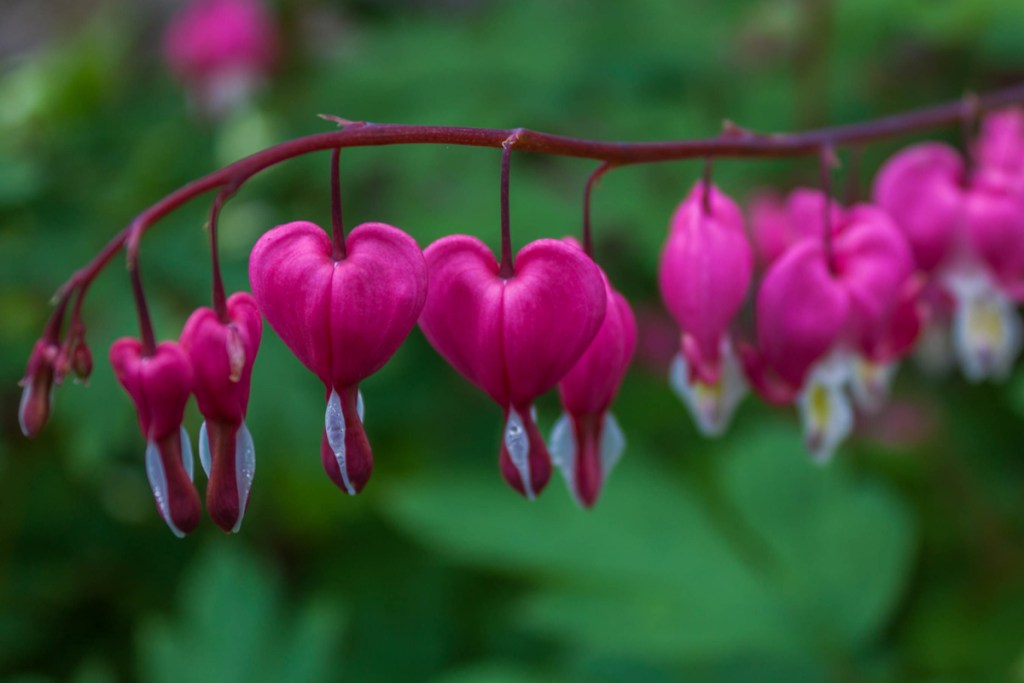
Bleeding hearts
Bleeding hearts are some of the daintiest, yet unique blooms you can find. They love shade, blooming in the cooler parts of spring, and stay in bloom for several weeks. There are some varieties that even rebloom throughout the summer months. How much shade they receive will be important to their longevity, though, as they’ll go dormant if exposed to too much sun. But don’t worry! Most of the time, the roots will still be alive, and the bleeding heart plant will regrow the following season.
Bleeding hearts are fairly low maintenance, enjoying a moist (but not soggy) soil. They are susceptible to powdery mildew and aphids as well as leaf spots. Be sure to trim off any affected foliage as soon as you notice it so the problem doesn’t spread and worsen.
Lilacs
Lilac bushes will be a beautiful addition to your garden as the blooms appear in mid to late spring. The blooms are fragrant, growing in clusters on the branches, and aren’t too overpowering. Lilac bushes are best planted in the fall before the ground freezes over, giving them time to become established and bloom again the following spring. They grow roughly one to two feet per year, so this is a plant you’ll want to keep an eye on and prune as needed to keep it from getting out of control.
Lilac bushes don’t require much maintenance once their roots are established, so you’ll find yourself providing it with more care in the fall when you initially plant it. When spring comes around, you’ll really only need to water them during periods of drought, as well as fertilize them annually.
Pansies
Pansies are low-growing, compact plants that are gorgeous options for early and late season planting since their initial bloom is from spring to early summer; there are also some varieties that will rebloom in the fall. They don’t get very tall, which makes them perfect for mixing in between some of your larger plants like lilies, grasses, and shrubs. If you live in USDA hardiness zone 7 or warmer, you can even grow pansies through the winter.
If you aren’t growing from seed, make sure you buy pansies that are bushy and full of buds. Ones that are already full of blooms should be avoided as much as possible, as they’re likely more stressed than their counterparts that haven’t bloomed. Things like deadheading and trimming unhealthy foliage will help encourage new growth and more blooms, increasing the chances that your pansies will produce new flowers in the fall.
Virginia bluebells
Virginia bluebells bloom from mid spring to early summer and enjoy a location that features partial to full shade. Their pink buds give way to blue, trumpet-shaped blooms that are especially attractive to bees and butterflies. Bluebells should be planted 12 to 18 inches apart to allow room for the roots to grow.
Due to their lengthy flowering period, Virginia bluebells will need more water to keep them healthy and happy. These plants are perfect for a shaded garden bed under a tree, adding some color to shade-loving grasses.
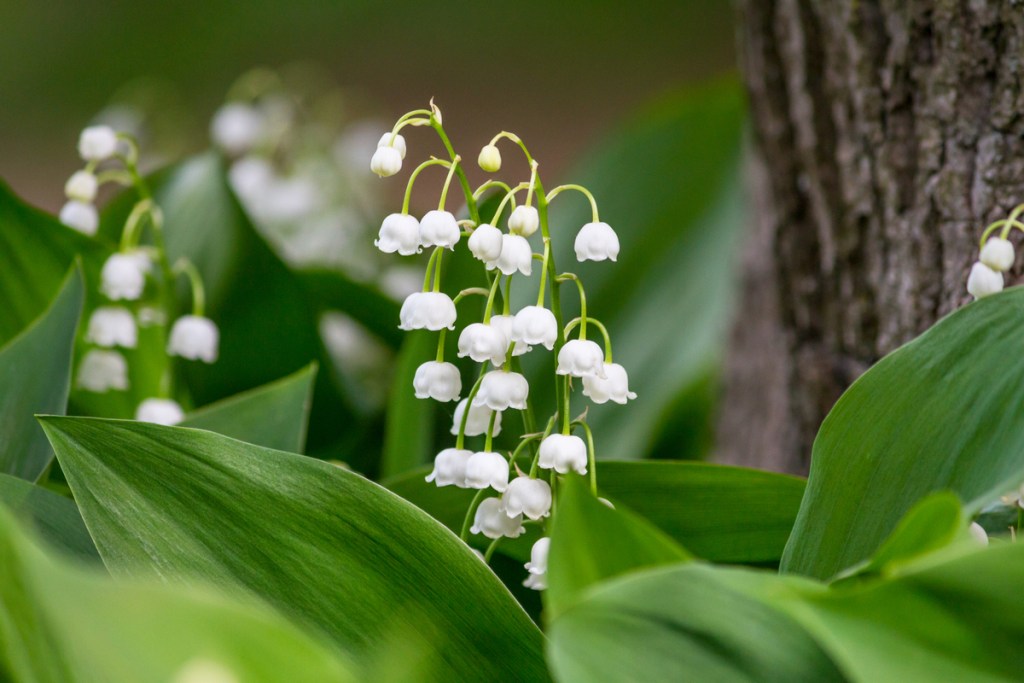
Lily of the valley
Although not a true lily, the lily of the valley will still be a beautiful transitional plant for spring to summer. It has beautiful green leaves that make a five to 10 inch arch, completed by small white blooms at the end of the stem. They’re best planted in the fall, giving them time to establish their roots before winter and to prepare themselves for the next growing season.
They don’t require a lot once they’re established, only needing to be watered during dry spells. Be wary, though! This delicate-looking plant grows quickly and can spread fast if not maintained. Lily of the valley will be easiest to manage if planted in containers or a raised garden bed where it can’t spread as easily.
Peonies
Peonies are slow growing, blooming anywhere between late spring and late summer depending on the variety. That means that if you plant a few different varieties of peony, you’ll be able to enjoy their blooms at multiple points throughout the growing season. Peonies should be planted in the fall, roughly six weeks before the first freeze so they have time to get established before going dormant.
If planted in the right spot, peonies can actually survive for decades. They’re a great addition to a home garden where you know you’ll be around for a while. They don’t require much maintenance once established (though they do benefit from an annual pruning). Peonies don’t like to be moved, so be sure to plant them where they’ll have enough space to reach their mature size (about three to four feet in diameter).
Irises
Irises are unique in that their blooms are formed from two kinds of petals: falls (which are the outer petals and droop downward) and standards (that stay upright). They’ll add an interesting look to your garden beds, pairing well with more classic-looking flowers. Iris varieties can grow from bulbs or rhizomes and bloom around late spring to early summer. They vary in size depending on variety, growing anywhere from six inches to four feet tall.
You should take care to deadhead the spent blooms, allowing the plants to direct more energy to the healthy flowers and foliage and increasing the chances they could bloom again in the fall (so long as the variety you have allows for it). Once the first frost passes and the foliage is yellowed, you can trim the irises to the ground.
These spring and summer plants are sure to enhance your garden this season. There are plenty more, too, that bloom between late spring and early summer, keeping your flower beds colorful and happy all season long!
